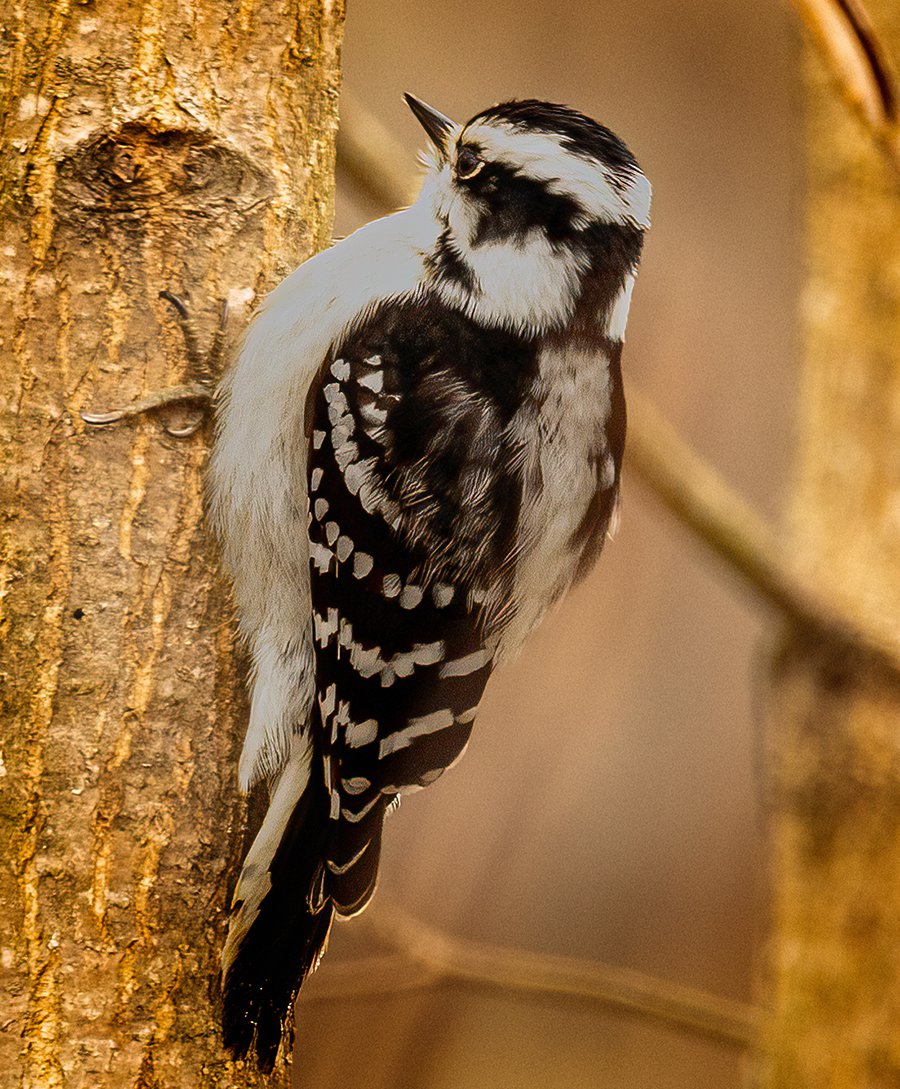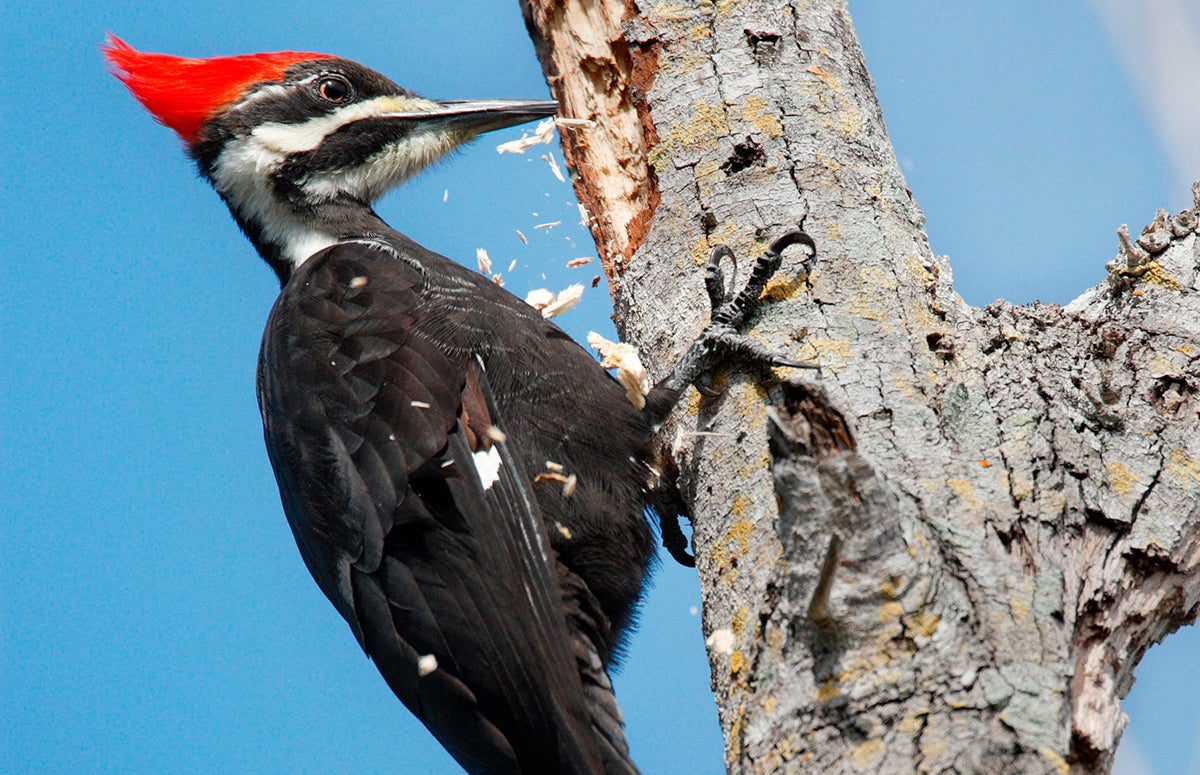Woodpeckers in Florida: Recognition Tips and Habitat Preferences
Wiki Article
Discover the Remarkable World of Woodpeckers: Everything You Required to Know
The globe of woodpeckers is a realm filled with one-of-a-kind habits, elaborate adjustments, and a diverse array of species. From their environments and distribution patterns to their feeding behaviors and specialized anatomical attributes, woodpeckers have actually long captivated the interest of ornithologists and nature fanatics alike. Comprehending the intricacies of these remarkable birds offers a glimpse into the complex interaction in between their biology and the environment. As we discover the world of woodpeckers better, we reveal a riches of details that clarifies their importance in ecological communities and the challenges they deal with in an ever-changing world.Woodpecker Habitats and Circulation
In North America, for instance, woodpeckers can be found in both coniferous and deciduous forests, utilizing their strong beaks to forage for insects and develop nesting tooth cavities in trees. In Africa, specific woodpecker species have actually adapted to dry settings, such as the acacia timberlands, where they play an important role in regulating insect populations.
Feeding Behaviors and Diet Plan
Amongst the numerous facets of their actions, woodpeckers show distinctive feeding habits and dietary preferences. These birds are primarily insectivores, with a diet that includes ants, beetles, caterpillars, and other insects located in trees. Woodpeckers utilize their solid beaks to drill into the bark of trees, probing for insects and larvae concealed under the surface area. Along with pests, woodpeckers additionally take in nuts, seeds, fruits, and sap. Some types have specialized tongues with barbed suggestions that help them extract pests from gaps in wood.Woodpeckers are known for their drumming actions, which offers not only to communicate with various other woodpeckers yet additionally to find food. The rapid drumming sound is developed by the bird pecking on resonant surfaces like dead trees or steel posts. This habits can attract pests concealed in the wood, permitting the woodpecker view it now to identify their Continue existence and feed upon them.
Distinct Adjustments for Tree Climbing
In their skilled quest of insects concealed within tree bark, woodpeckers have advanced remarkable physiological functions that outfit them with special adaptations for reliable tree climbing. One of the vital adjustments is their zygodactyl feet, with 2 toes directing onward and two aiming backwards, providing a strong grasp on tree trunks. This specific foot setup allows woodpeckers to hold on to vertical surface areas easily, enabling them to go up and down trees with agility. Furthermore, woodpeckers have stiff tail feathers that serve as a helpful prop while they climb, aiding in equilibrium and stability. Their strong, chisel-like beaks are not just used for exploration right into wood but additionally for clutching onto bark as they rise tree trunks. Woodpeckers have solid neck muscles and a distinct head framework that absorb the effect of constant pecking, enabling them to climb up up and down without creating harm to their brains. These adaptations display the incredible evolutionary style that makes it possible for woodpeckers to browse trees with accuracy and efficiency.Diverse Woodpecker Variety Worldwide
With over 200 various varieties spread across various environments worldwide, the household of Picidae encompasses an impressive variety of woodpeckers. These birds can be discovered in woodlands, timberlands, savannas, and even city areas, showcasing their adaptability to various atmospheres. From the iconic Northern Flicker in North America to the vivid and elusive Crimson-backed Flameback in Asia, each woodpecker types exhibits one-of-a-kind attributes in regards to quill, behavior, and environment choice.Woodpeckers vary significantly in dimension, with the diminutive Downy Woodpecker gauging around 6-7 inches in length, while the powerful Lineated Woodpecker can rise to 17 inches - Woodpeckers in Florida. Their beaks additionally come in different sizes and shapes, mirroring their feeding routines. Some varieties focus on drawing out bugs from tree bark, like the Acorn Woodpecker, while others, such as the Black-cheeked Woodpecker, prey on fruits and seeds

Conservation Initiatives and Obstacles
Preservation campaigns for woodpecker populaces are crucial in minimizing the effect of habitat loss and various other hazards facing these diverse bird species. Woodpeckers deal with numerous obstacles to their survival, mainly because of deforestation, urbanization, climate modification, and intrusive species. To address these concerns, conservation initiatives concentrate on safeguarding and bring back woodpecker environments, carrying out lasting forestry methods, and raising understanding regarding the significance of these birds in communities.One substantial obstacle in woodpecker preservation is the fragmentation of their habitats, resulting in isolated populaces that are extra at risk to termination - Woodpeckers in Florida. Guardians published here work to create wild animals hallways and secured areas that connect these fragmented environments, permitting woodpeckers to move between different locations for feeding, breeding, and shelter
/https://tf-cmsv2-smithsonianmag-media.s3.amazonaws.com/filer_public/30/ac/30acf469-09cd-4fcc-a812-1aa30f477578/aprmay2024_l09_woodpeckers.jpg)
Final Thought
In final thought, woodpeckers are fascinating birds with special adaptations for tree climbing and feeding behaviors. Further research study and preservation activities are needed to make sure the survival of woodpeckers in the wild.Report this wiki page